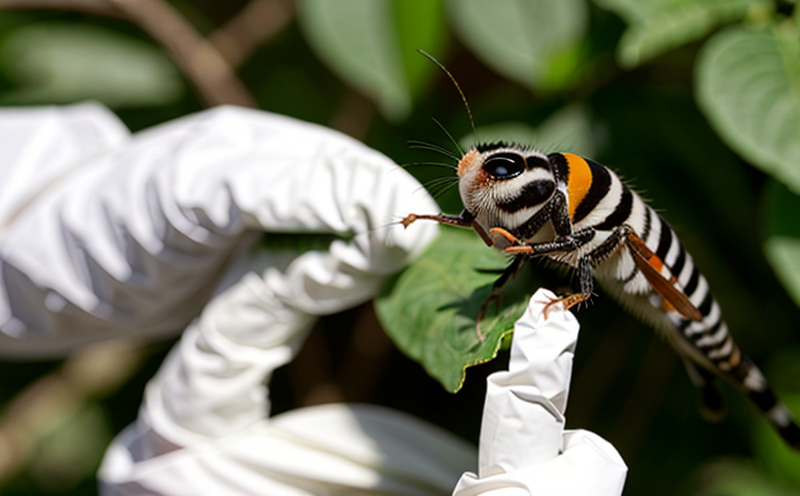Pest control inspection
In the realm of Environmental Health and Safety (EHS) Inspection, pest control inspections play a crucial role in safeguarding public health. These inspections aim to identify pests that can threaten human well-being or compromise the integrity of buildings and infrastructure. The primary objective is to prevent infestations from becoming widespread, which could lead to serious health issues such as allergies, infections, and even structural damage.
Pests like rodents, insects (e.g., cockroaches, ants), and birds can spread diseases through their excretions or by coming into contact with food supplies. They also pose risks of contaminating surfaces and structures. Proper pest control inspections are essential for maintaining a safe working environment and ensuring compliance with local health codes.
The process involves thorough visual inspection of premises, followed by the use of advanced detection methods such as traps, bait stations, and pheromone lures. Once identified, pests can be effectively managed through targeted treatments that minimize risk to human health. This approach not only ensures immediate safety but also helps in creating a long-term preventive strategy.
Environmental Health Officers (EHOs) play a vital role in conducting these inspections. They adhere strictly to established protocols and standards, ensuring that all aspects of the inspection are comprehensive and accurate. The findings from such inspections serve as critical input for developing effective pest management plans tailored specifically to each facility's needs.
Understanding the types of pests commonly found in different environments is crucial for effective control measures. For instance:
- Rodents often inhabit areas with easy access to food and water sources.
- Insects may enter structures through small gaps or cracks, particularly during warmer months when they seek shelter from heat.
- Birds can pose significant risks by nesting in confined spaces, leading to potential structural damage over time.
Effective pest control inspections require a combination of knowledge about pest behavior and the ability to employ appropriate tools and techniques. By leveraging advanced technology and methodologies, EHS professionals can ensure that facilities remain safe from pests while minimizing environmental impacts associated with chemical treatments.
| Standard | Description |
|---|---|
| ISO 14001:2015 | Serves as a framework for managing environmental aspects and complying with applicable legal requirements. |
| ASTM E2369-18 | Provides guidelines for the evaluation of pest management programs in commercial buildings. |
| EN 45011:2017 | Details procedures and requirements for quality assurance systems used by inspection bodies involved with environmental health matters. |
Customer Impact and Satisfaction
The implementation of robust pest control inspections significantly enhances customer confidence in the safety and hygiene standards maintained within facilities. By addressing potential risks early on, businesses can prevent costly disruptions caused by infestations or outbreaks. This proactive approach helps maintain operational continuity, thereby enhancing overall productivity.
Customers benefit from knowing that their environment is free from pests, which contributes to a positive work culture where employees feel secure and motivated. The peace of mind provided through regular inspections also fosters trust between service providers and clients. Satisfied customers are more likely to recommend these services to others, leading to broader market reach.
From an operational perspective, pest control inspections contribute to reduced downtime and increased efficiency. Companies that prioritize EHS compliance report higher employee satisfaction levels due to improved working conditions. Furthermore, adhering to strict standards ensures that facilities remain compliant with regulatory requirements, avoiding potential fines or penalties.
To measure customer satisfaction accurately, we conduct surveys after each inspection. Feedback from clients highlights improvements made during the process and areas needing enhancement. This continuous improvement cycle allows us to refine our services further, ensuring they meet evolving expectations.
Competitive Advantage and Market Impact
Pest control inspections offer significant competitive advantages in today’s market where customer expectations for safety and hygiene are higher than ever before. By offering superior inspection services backed by rigorous adherence to international standards, companies position themselves as leaders in their respective fields.
- Enhanced Reputation: Clients perceive organizations providing top-tier pest control inspections more favorably, enhancing brand reputation.
- Premium Pricing: Businesses can command premium prices for services that exceed basic requirements, differentiating them from competitors offering less comprehensive solutions.
- Broad Market Reach: Demonstrating expertise in EHS matters opens doors to new markets and opportunities for business growth.
In addition to these advantages, pest control inspections contribute positively to the broader market by promoting sustainable practices that reduce environmental footprints. This aligns with global trends towards eco-friendly solutions across various industries.
Adopting best practices in pest management helps mitigate risks associated with pest-related incidents, which can have far-reaching consequences beyond individual organizations. By investing in high-quality inspection services, businesses contribute to the overall health and safety of communities they serve, fostering a safer world for all.





